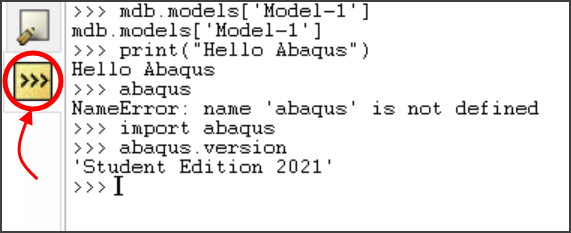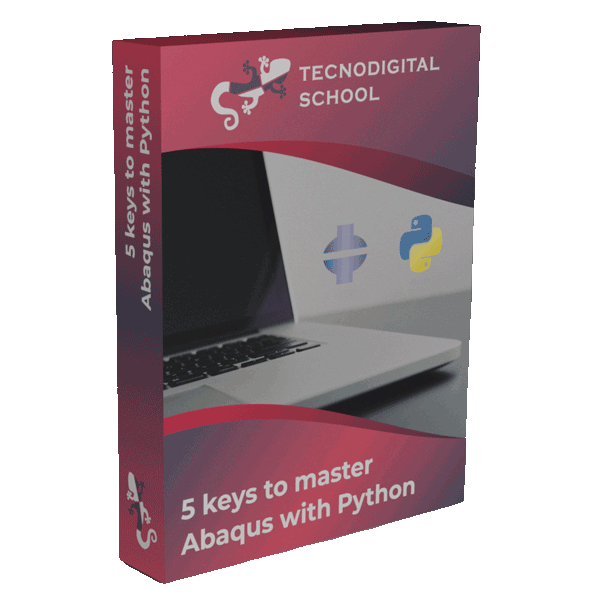Abaqus is an amazing tool for numerical simulation, in addition it provides an amazing feature to make our lives a lot easier: Python.
We can control all the operations and tasks carried out by Abaqus through Python scripts. However, this feature is unknown for most Abaqus users and that’s why in this post I want to introduce the 5 keys that you need to learn “How to use Python to control Abaqus“.
1. The 5 keys to rule Abaqus with Python
I have collected what I consider the most important Abaqus features that will pave the way to let you control Abaqus using Python:
#1 Running your first script in Abaqus
Although it sounds trivial, learning that you can run Python scripts within Abaqus/CAE is mindblowing at first! All you have to do is:
File → Run Script…
#2 Record macros to get started
The learning curve of Python scripting in Abaqus is surprisingly smooth! You can record a Macro to repeat the same operations whenever you want. And you can also take advantage of the Python commands recorded by the Macro to modify and customize them to your needs into your own scripts. To record a Macro in Abaqus/CAE:
File → Macro Manager… Then Create
#3 Create your own Python scripts
Even though I have been working with Abaqus and Python for many years, every time I start creating a new script, the first step is to take the base commands from a file. This file is generated by Abaqus: through a macro, the rpy file or the jnl file. Then, it is a matter of editing and play around with the Python language to get your script done!
You can find a post dedicated to these files here.
#4 The Python Console (CLI)
The Command Line Interface (CLI) integrated in Abaqus/CAE is the best tool for testing, debugging or even querying data without the need to run a whole script. You can run any commands there and the Python API will execute them live. This is one of the advantages of Python not been a compiled language…

#5 The documentation
Abaqus documentation is awesome. I would say is the strongest feature of this FE software. And the documentation for Python scripting is not an exception (section: Programming). Every single function and class is described in detail, including required and optional arguments, exceptions…
I use the documentation every day and it has rarely disappointed me. Once you get used to it, you will use it to clarify any doubts.
Watch out!
If you don’t have access to Abaqus, you can use the Learning Edition for free. Download it from the official source here
2. The keys in practice!
An image is worth a thousand words… What about a video?
In the next video you can see how to put in practice the 5 keys mentioned above.
BONUS: you will see how a real Python script is used to automate the full workflow of a simulation and you can download that script here!
If you want to dive deeper into the world of Abaqus scripting with Python, I recommend you check this post.
I hope that you find these tips useful!



